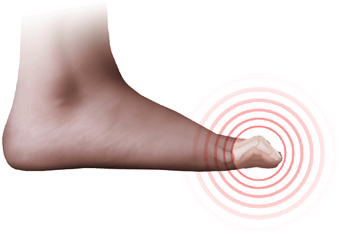4 Common Dance Injuries and Exercises to Help Prevent Them
Screenshot Processed with VSCO with b1 preset
Dancing requires considerable strength, flexibility, and stability, which poses a high risk for injury in the sport. One study found that as many as 82% of modern dancers experience at least one injury in their dancing careers, with the foot and ankle reported as the most common site for injury (Shah et. al, 2012). It is crucial for dancers to prepare their bodies for the rigors of dance in an effort to prevent dance injuries and promote longevity in the sport! Taking some preventative measures can go a long way towards helping dancers have a longer and safer career.
We’ve highlighted some common dance injuries and some exercises that can help you avoid them! Keep in mind that injuries can vary based on intensity, training volume, level of dancer, and style of dance.
Common Dance Injuries
Achilles Tendinopathy
Image Source: https://www.medigoo.com/articles/achilles-tendinitis/
Acute achilles tendon injuries are commonly caused by dynamic overload (muscle contracts so hard the tendon is injured). During dance, a move such as a releve can place more load on the achilles than the tendon can handle. This results in disruption of the tendon at the musculotendinous junction in some degree, resulting in pain and dysfunction.. Another way an achilles injury can occur is through a high load stretch mechanism, such as the eccentric demands in the bottom of a plie. Acute injuries to the achilles will be tender, perhaps swollen, and present as pain during loading activities (i.e. going en pointe).
Posterior Ankle Impingement
Ankle “impingement” can present as a pain and restriction in the ankle that can be the result of various factors, including excessive plantar flexion and deep stretching. In this injury the ankle joint gets “sticky” and uncomfortable with certain ranges of motion. Ankle impingement can go beyond dance and impact your ability to walk, run, navigate stairs, jump, and squat.
Lateral Ankle Sprain
Image Source: https://advanceaquaticpt.com/lateral-ankle-sprains/
A lateral ankle sprain is one of the most common acute ankle injuries. This injury can be caused by poor jump landings (with sickled foot), or falling out of a turn, balancing on a sickled foot in demi or full pointe. They are often accompanied by a pop, swelling, and general ankle instability. If you find that you have “rolled your ankle” in the past, it may be worth seeking an evaluation to rule out serious injury and prevent injury recurrence!
Trigger Toe
Photo Credit: https://danceinjurydvd.com/trigger-toe
Trigger Toe generally occurs with overuse of the foot, creating pain and inflammation. Pain may occur when pointing the foot (or a feeling of your big toe being “stuck” while pointing), and the pain can get worse with jumps. Pointe dancers can be especially vulnerable due to the excessive plantar flexion required resulting in high load demands to the toes and intrinsic foot musculature..
How Physical Therapy Can Help
Seeking physical therapy can help improve your strength, motor control, range of motion, and technique. Manual techniques provided by a licensed physical therapist can help reduce pain, control inflammation, and improve joint mechanics. Be sure to seek Physical Therapy when pain is persistent or if you suspect acute injury!
Exercises to Strengthen the Foot for Dance
Here are some exercises to improve tendus and releves by strengthening your foot from the inside out. These exercises can also be beneficial to others wanting to improve their ankle stability and “core” of the foot.
Toe Walks with Tennis Ball
Place a tennis ball in between your ankles and walk on releve. This exercise helps build ankle stability by strengthening the extrinsic muscles of the foot.
Bourree with Weighted Pilates Ball and Passe Balance
Progress toe walks by working in 5th position and by adding a weighted ball. At the end of your lap, slowly move into a passe balance to get your core involved.
Short Foot
This is basically the equivalent of a crunch for your foot. Keep your toes and heel on the floor as you focus on lifting the arch of the foot. Make sure to not crunch your toes! This helps build strong arches by targeting the intrinsic muscles of the foot and will help improve your tendus and prevent sickling. Try doing this exercise in weight bearing positions, and you can progress this by performing it while balancing on one foot. Try adding 2 sets of 15 before doing tendus, or even do them throughout the day!
Child’s Pose with Towel Roll
Add a rolled up towel to the top of your foot as you move into a child’s pose stretch as a way to GENTLY stretch your feet. You do not need to add a lot of pressure, or excessively stretch your feet to achieve a better tendu. This is a low load long duration stretch.
By: Christina Diamantis and Dr. Justin Hanus
Are you interested in our services at Trifecta Therapeutics, but live too far away from our facility? Schedule a telehealth visit!






